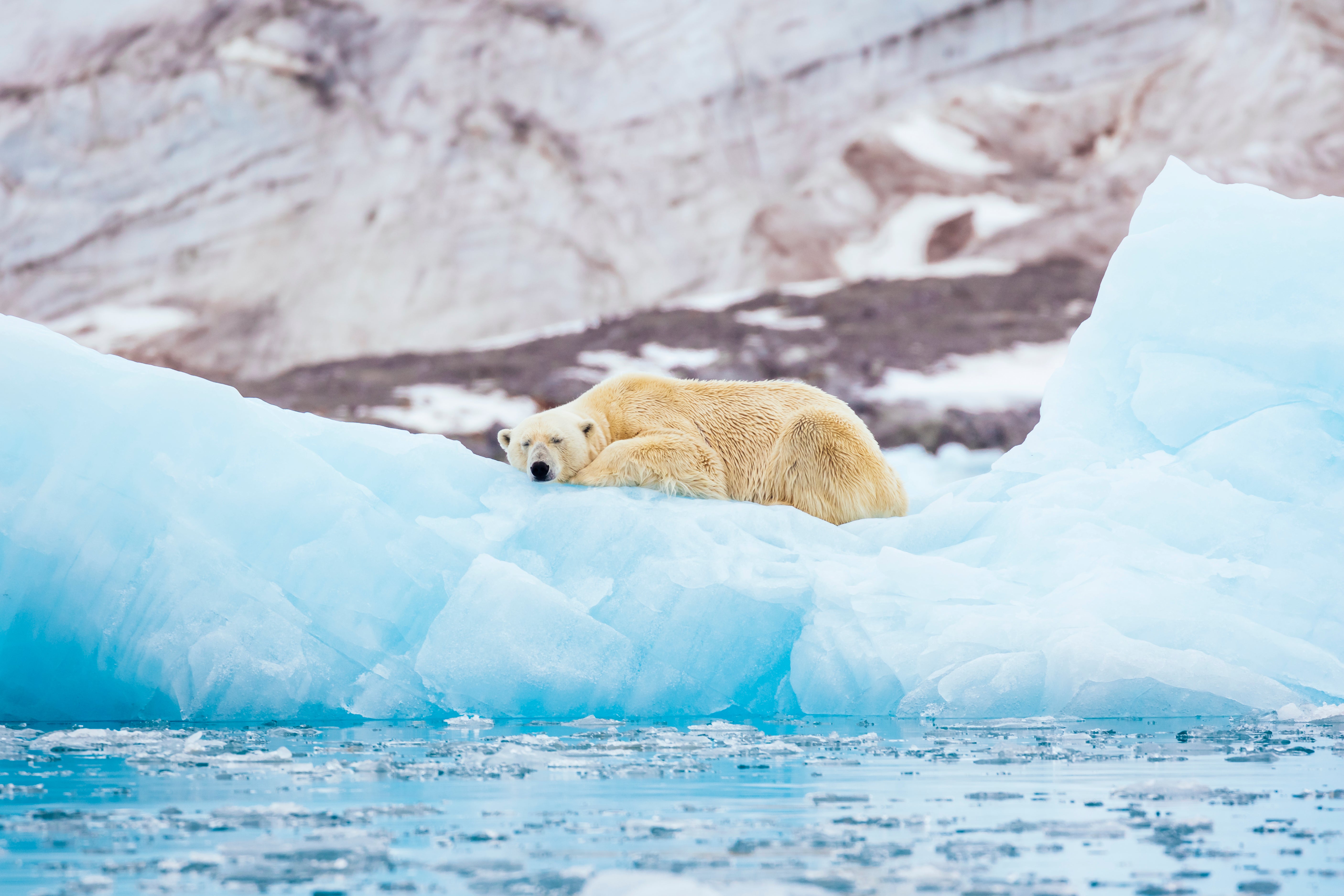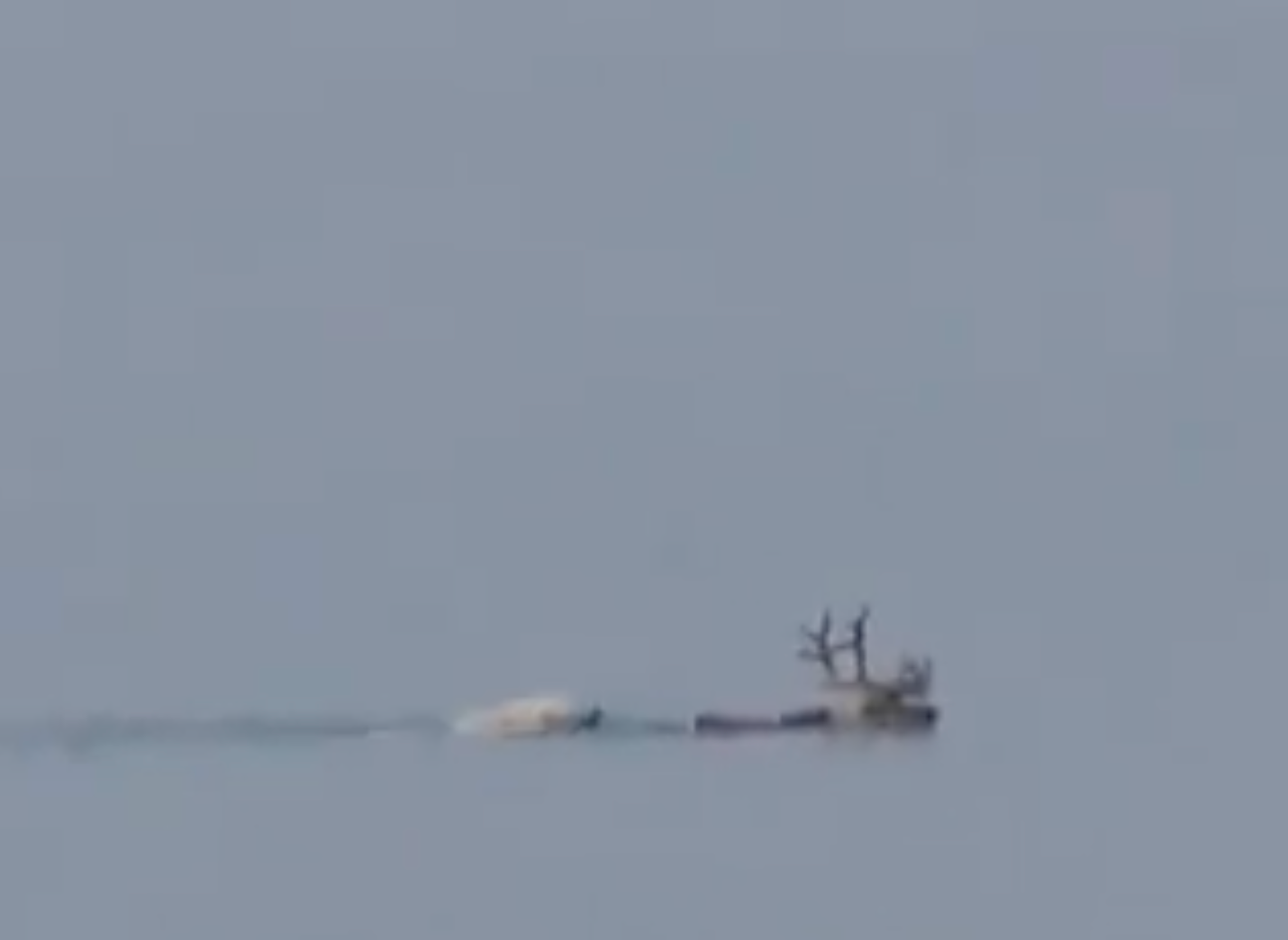An Alaskan mother and child killed by a polar bear: Is the climate crisis increasing these deadly encounters?
Some Arctic communities have started patrols to keep watch for wandering polar bears. Graig Graziosi reports


Your support helps us to tell the story
From reproductive rights to climate change to Big Tech, The Independent is on the ground when the story is developing. Whether it's investigating the financials of Elon Musk's pro-Trump PAC or producing our latest documentary, 'The A Word', which shines a light on the American women fighting for reproductive rights, we know how important it is to parse out the facts from the messaging.
At such a critical moment in US history, we need reporters on the ground. Your donation allows us to keep sending journalists to speak to both sides of the story.
The Independent is trusted by Americans across the entire political spectrum. And unlike many other quality news outlets, we choose not to lock Americans out of our reporting and analysis with paywalls. We believe quality journalism should be available to everyone, paid for by those who can afford it.
Your support makes all the difference.The climate crisis isn’t only taking a devastating toll on humanity with a carousel of increasingly extreme events. It’s also greatly harming the planet’s biodiversity.
On Tuesday, reports emerged that a polar bear had killed a woman and a child in a small village in western Alaska. While it’s unclear if the attack was a direct result of the climate crisis, changing conditions have forced the bears into more — and sometimes fatal — encounters with humans.
“Initial reports indicate that a polar bear had entered the community and had chased multiple residents,” Alaska state troopers wrote in a dispatch report about the attack. “The bear fatally attacked an adult female and juvenile male.”
A local resident ultimately shot and killed the bear.
The World Wildlife Fund issued a statement to The Independent following the attack.
“WWF is deeply saddened to hear that a woman and a boy were killed by a polar bear in the community of Wales, a predominantly Inupiaq village of 145 people located on the far western edge of the Seward Peninsula adjacent to the Bering Strait,” the organisation said. “Our thoughts are with the family and members of the community as they deal with this tragedy. We are focused on giving the community privacy and space to grieve. We are ready to listen to the community when they are ready and discuss the support we can offer.”
Being Arctic dwellers, the bears live in a region that is heating at four times the rate of the rest of the world, as reported by NASA scientist Peter Jacobs.
Rising ocean temperatures are melting sea ice and reducing their hunting grounds. Somewhere between 21,000-30,000 polar bears are now left in the wild, but estimating whether there is a decline in adult population numbers is tricky due to a lack of long-term data.
However, recent aerial counts of polar bear cubs between the ages of one and two-years-old have shown a dramatic decrease in bears reaching adulthood since the 1990s. Those cubs, called “yearlings”, used to account for 12 per cent of the polar bear population. Now, they only account for three percent.
News stories have focused on depressing images of emaciated polar bears stranded on ice flows and the increased – though still rare – numbers of aggressive encounters between the generally reclusive polar bears and humans. In August, a polar bear attacked three people when they stumbled on it feeding on a carcass near their cabin in Sanirajak, Nunavut, Canada. All three survived the attack but suffered serious injuries as a result, according to the CBC.
In another incident in August, helicopters were called in to scare off seven polar bears that were stalking a captive herd of reindeer in Siberia. The bears were reportedly acting aggressively towards the reindeer and their human keepers, likely because they were hungry. In 2014, children in the village of Arviat in the Canadian Arctic, congregated inside a community building in their Halloween costumes because a trio of polar bears were sniffing around outside looking for food.
Despite these reports, top polar bear researchers caution against focusing on these incidents. They note that it’s the conditions – not the bears – that have changed.
"I think it's important to differentiate between a behavioral change, as we would commonly think of it, and think of it more in the framework of something the bears are forced into because their habitat is gone," Dr Steven Amstrup, the chief scientist at Polar Bear International (PBI), told The Independent.
Dr Amstrup has been researching polar bears for the non-profit since 2010. Before joining PBI, he spent 30 years at the US Geological Survey working in Alaska’s Beaufort Sea researching the bears, and has served as a chair on the International Union for the Conservation of Nature’s Polar Bear Specialist Group.
He said that climate change-driven sea ice melt is the predominant threat to the global polar bear population. According to NOAA’s 2021 Arctic report card, the region experienced its warmest autumn since records began in 1900. Post-winter sea ice levels were at their lowest since NOAA began keeping track a decade ago. These changes are devastating polar bear hunting grounds.

Polar bears predominantly eat two species of Arctic seals – bearded and ring. The seals use snow that falls on the sea ice to build dens for when they give birth. When seal pups venture onto the ice, they, and the adults, make up most of polar bears' caloric intake.
Less sea ice, and there’s fewer places for seals to build birthing dens. In turn, there are fewer opportunities for polar bears to feed. Ice is also freezing later in the year than in the past, meaning that the snow dissolves in ocean water rather than accumulating.
With fewer seals to feed on, polar bears have been forced to expand their hunting grounds and find new sources of food. Reports from The Royal Society Open Science journal found that polar bears are more frequently visiting the nesting locations of birds, like eider, and eating them and their eggs.
This change in polar bears’ hunting methods not only threatens these species of Arctic ground bear, but provides insufficient caloric replacement.
Seals are like “fat pills” for the bears, according to Dr Amstrup. Feeding on birds and eggs cannot fully replace the energy needed for polar bears to survive and procreate.
While some reports out of Russia have suggested that polar bears are turning to cannibalism, Dr Amstrup said those incidents are rare, noting that all kinds of bears kill other bears. It usually happens among adult males and cubs to free up nursing females for breeding.
More troubling are reports of bears more frequently visiting human settlements. While the Arctic is sometimes thought of as a barren wasteland of snow and ice, it is actually home to more than 21,000 known species of animals, plants, fungi and microbe species, as well as four million humans.
Dr Amstrup said polar bears have been scavenging bowhead whale remains left by the Iñupiat people, who are native to Alaska, creating both risks for the Indigenous community and the bears. In other regions, polar bears are attacking captive reindeer herds.
To protect both people and bears, PBI and WWF have been working on mitigation efforts. PBI is experimenting with ground-based radar, a technology generally used by the military, to detect a bear's approach. The technology would allow people to scare off the creature before it reaches a human settlement. WWF is organising community-based bear patrols which respond to bear threats non-lethally.
The lack of sufficient food sources for polar bears also means fewer bear cubs reaching adulthood. While bears are still mating at the same rates, fewer of the cubs are making it the stage known as a “yearling”.
“Many people don't quite appreciate when biologists say that the survival of cubs is not as good as it used to be, what they're really saying is – it's a euphemism that means more polar bear cubs are starving to death,” Dr Amstrup said.
There are some scattered reports of polar bear inbreeding, which can result in an emergence of recessive traits and the narrowing of genetic diversity in populations. There have also been some observations of polar bears mating with grizzly bears and producing hybrid offspring. Notably, these cases are rare.
A hybrid bear may ensure some elements of polar bear survives the decline of the Arctic, but researchers like Dr Amstrup are not content to make do with this scenario.
“If we allow the world to continue to warm to a point where polar bears have totally disappeared, there may be a few polar bear genes in something that looks like a grizzly bear. That's not really a very satisfying outcome,” he said. “More importantly though, polar bears are more likely to starve out before there's any chance that they could be bred out of existence.”
Some studies project that the polar bear may become extinct by 2100. The International Union for Conservation of Nature has included the bears on its “red list” of threatened species, warning of a possible 30 per cent population decline over the next 35 years.
Those projections aside, Dr Amstrup and Mr Downie remain hopeful, arguing that saving polar bears is completely within human control.
“From the standpoint of the greenhouse gas emissions pathway society is on, polar bears don't look like they're going to make it. But we have control over that,” Dr Amstrup said. “So if we halt warming in time, we can save the polar bears. And oh, by the way, if we do that, it will benefit the rest of life on Earth as we know it, including ourselves.”
This article was amended on January 19 2023 to update a quote from the WWF
Join our commenting forum
Join thought-provoking conversations, follow other Independent readers and see their replies
Comments